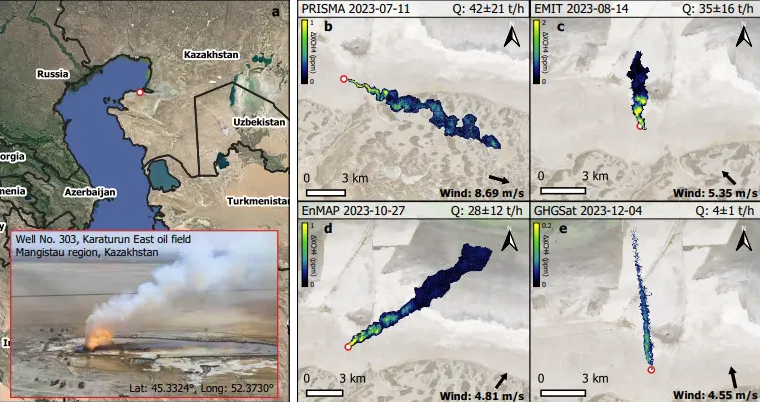The invisible methane leak in Kazakhstan from 127 thousand tons

It is the most massive event after the sabotage of North Stream 1 and 2
(sustainabilityenvironment.com) – At least 127 thousand tons of methane. A gigantic spill, lasting 6 months from June to December 2023. That has released into the atmosphere a quantity of greenhouse gases equal to that of more than 700 thousand cars in a year. It’s the second largest methane leak in history, as far as we know, right after the Nord Stream sabotage leak in 2022.
To make this known is a study conducted by the Netherlands Institute for Space Research and the Polytechnic of Valencia, who analyzed the satellite data collected by the French company Kayrros specializes in monitoring methane leaks. “The extent and duration of the leak is frankly unusual,” said Manfredi Caltagirone, head of the United Nations International Methane Emissions Observatory. “It is extremely large”.
The accident behind the methane leak
The incident began on 9 June 2023 with an explosion that gave rise to a large fire at well 303 at the Karaturun East oil field in the Mangistau region of Kazakhstan. The fire destroyed several parts of the safety equipment, causing the loss of control of the well and a fire 10 meters high. In the following days, the ground collapsed around the well, forming a 15-metre crater, making leak containment more difficult. In November a first attempt to block it with the injection of water into the well only reduced the leakage of methane. Only at the end of the year, pumping mud with a probe over 1000 meters deep, the leak was interrupted.
The analysis of about 48 satellite surveys allowed scientists to estimate the hourly flows of methane from the well over 6 months and quantify the leak. “Only the sabotage of the twin submarine pipelines Nord Stream 1 and 2 in the Baltic Sea on 26 September 2022, for which a total of 420-490 thousand tons has been estimated, could have led to higher emissions than the Karaturun event of 2023” the authors of the study concluded.





